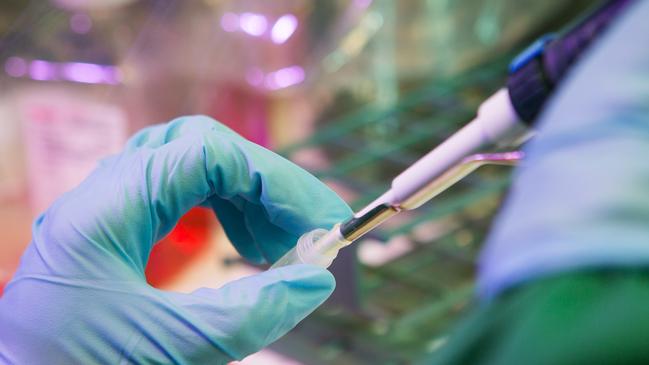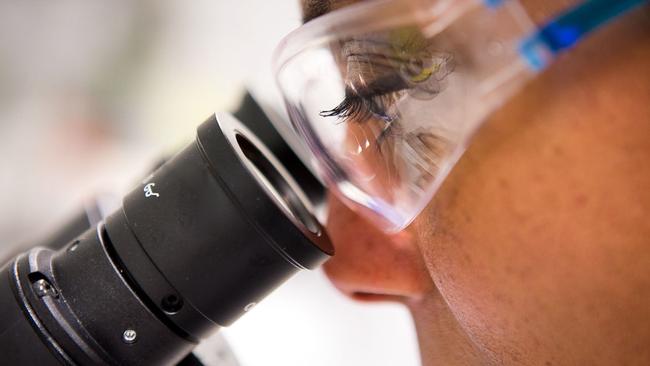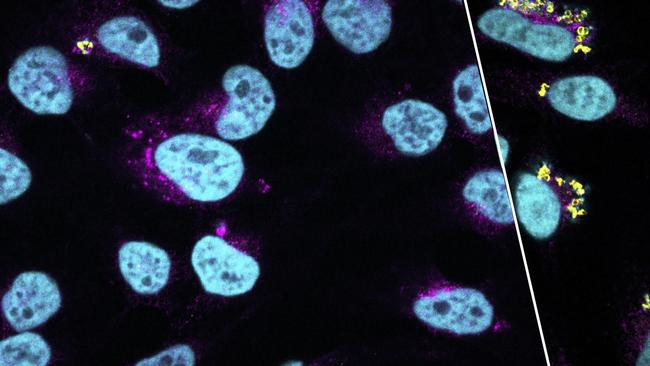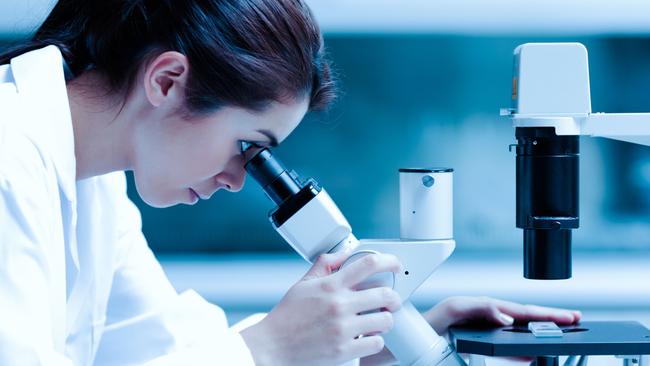Doherty Institute team discover crucial detail about golden staph
Victorian scientists have made a groundbreaking discovery that has revealed the Golden staph infection is a perfect and patient “trojan horse”.

Victoria
Don't miss out on the headlines from Victoria. Followed categories will be added to My News.
A major breakthrough by Melbourne scientists has revealed how the common bug golden staph turns deadly and has the potential to save millions of lives globally.
The team, led by the University of Melbourne’s Abdou Hachani, a senior researcher at the Peter Doherty Institute for Infection and Immunity (Doherty Institute), has published its groundbreaking discovery in the online medical journal eLife.
For the first time, the Doherty Institute team reports how Golden staph can hide inside human cells to avoid detection by the immune system. It is a stunning discovery set to pave the way for better treatment for patients at risk before they develop serious, and for some, fatal infections.
Australia has around 4000 Golden staph cases of blood infection a year, with about 20 per cent of patients dying.

Dr Hachani said one in three people unknowingly carry Golden staph in their nose or on their skin and for most this “colonisation” is harmless.
For some, however, Golden staph can lead to serious infection or death if it enters the bloodstream.
In a world first, the research team developed a new method called InToxSa, an acronym for intracellular toxicity of S. aureus, to study Golden staph behaviour inside human cells on a large scale.
Dr Hachani said the method was key to understanding how the bacterium behaved and provided valuable knowledge about its ability to survive and thrive in humans. Until now, Dr Hachani said, scientists had thought Golden staph was a pathogen that only thrived outside cells.
The University of Melbourne’s Tim Stinear, a molecular microbiologist at the Doherty Institute, was part of the team and said the method would help inform predictive medicine to treat complicated infections based on the genetic make-up of Golden staph.

“It is a powerful tool that combines genetic analysis, microbiological data and statistical comparisons,” Professor Stinear said.
“This new knowledge will guide research to find new ways to combat these infections.”
Samples from 400 people with Golden staph infections across Australia and New Zealand provided the Doherty Institute team with a unique treasure trove of data.
“We were lucky to have a very large collection of clinical isolates or Golden staph isolated from blood infections,” Dr Hachani said. “These were a key part to verify our hypotheses. And having isolates coming from real patients, causing real damage gave us the fuel for big data analysis.”

He said the team discovered Golden staph was a perfect and patient “Trojan horse”; a bug that can mislead its true intent.
Dr Hachani said the discovery would be life-changing and lifesaving. It is also timely.
By 2050 the United Nations estimates that up to 10 million deaths annually could be caused by superbugs and associated forms of antimicrobial resistance, with fears it could become a global pandemic more deadly than Covid.

“This discovery means that we will be able to design ‘a la carte’ treatments for patients with Golden staph before we reach the doom date of 2050,” Dr Hachani said, suggesting a rapid genomic test could be developed to identify mutations in Golden staph that would make it a sneaky and deadly threat in patients.
“What we need to do now, in clinical studies, is look at infected patients, collect their blood, sequence the pathogen and look for and identify the mutations to predict whether it is hiding to resist treatment,” he said.
“This discovery will change the way people research Golden staph and help put Victoria on the map of research advances against the global threat of antimicrobial resistance.”
More Coverage
Originally published as Doherty Institute team discover crucial detail about golden staph





